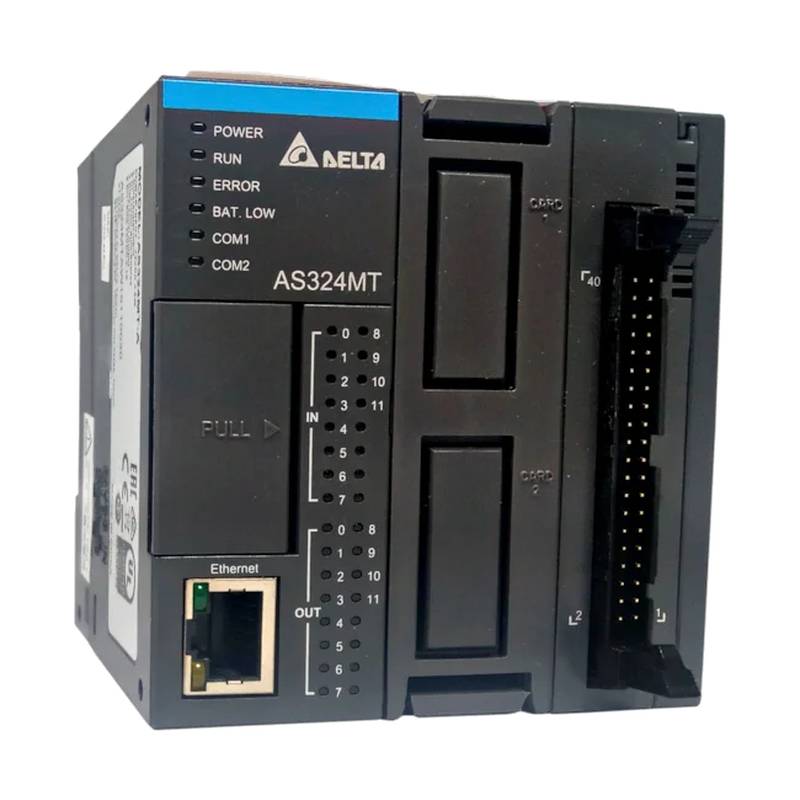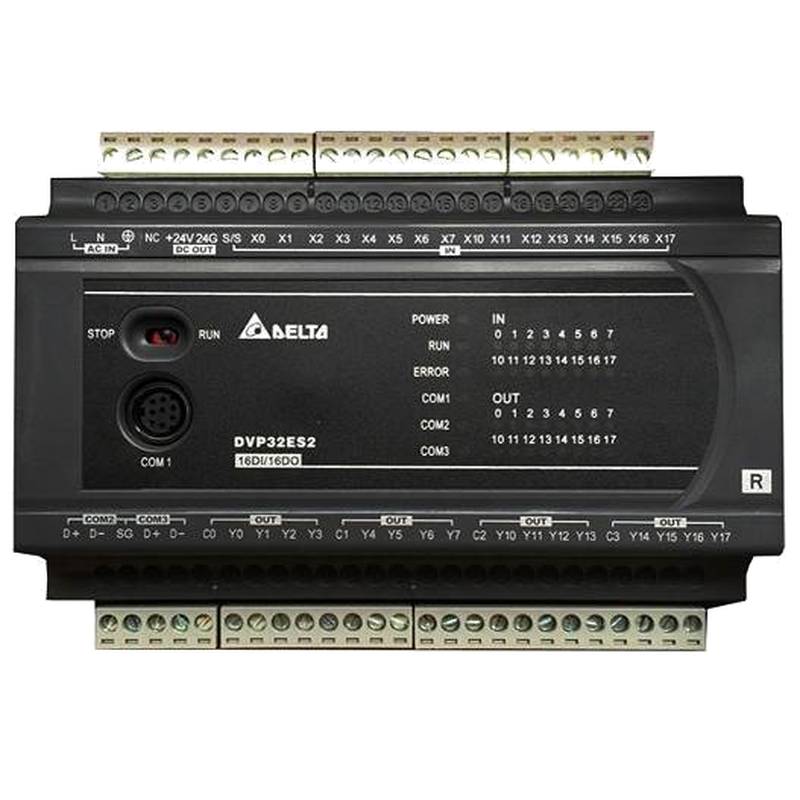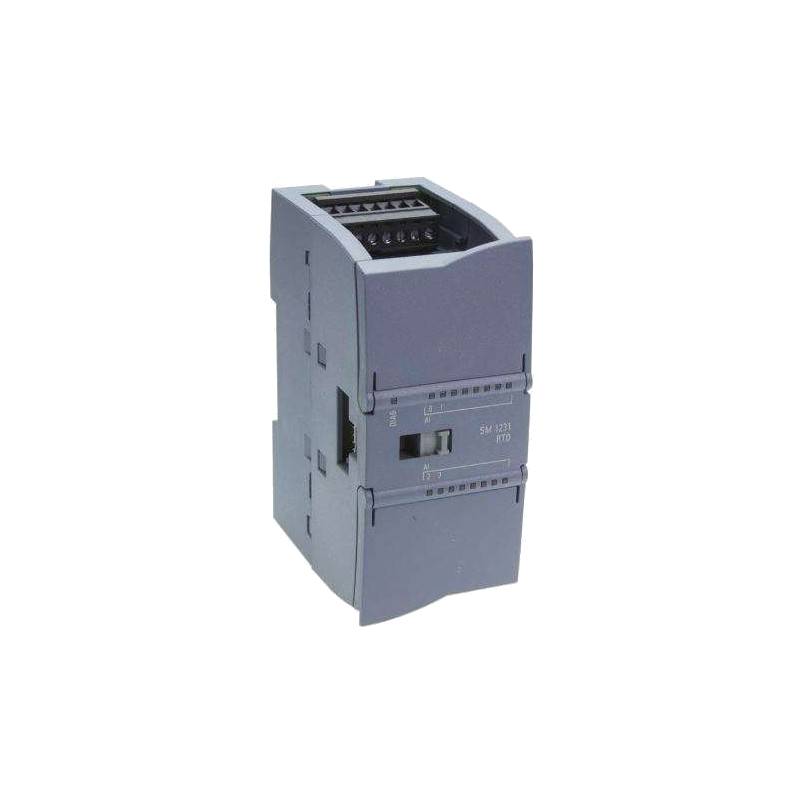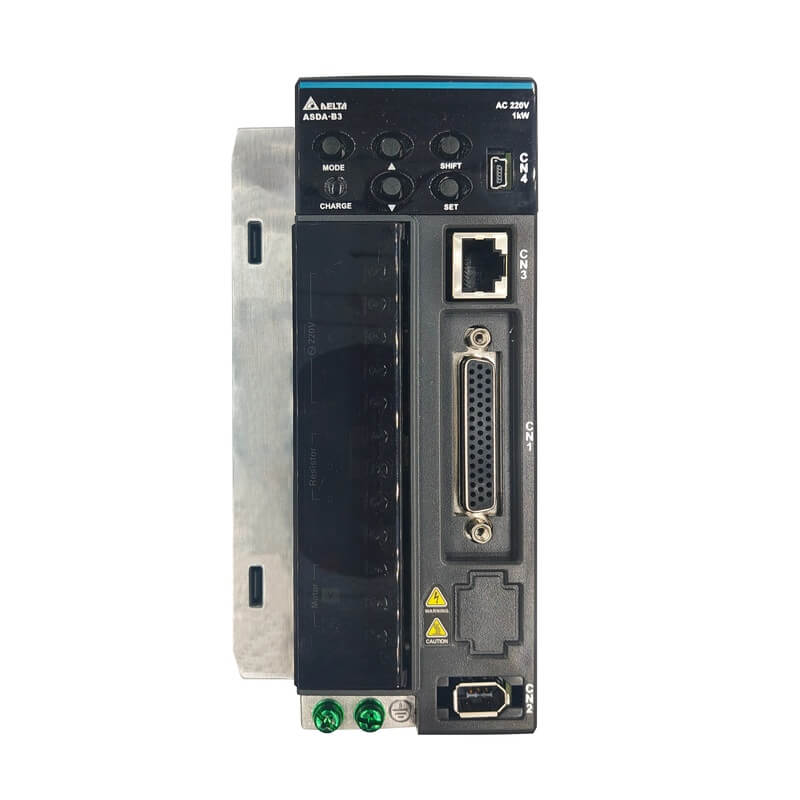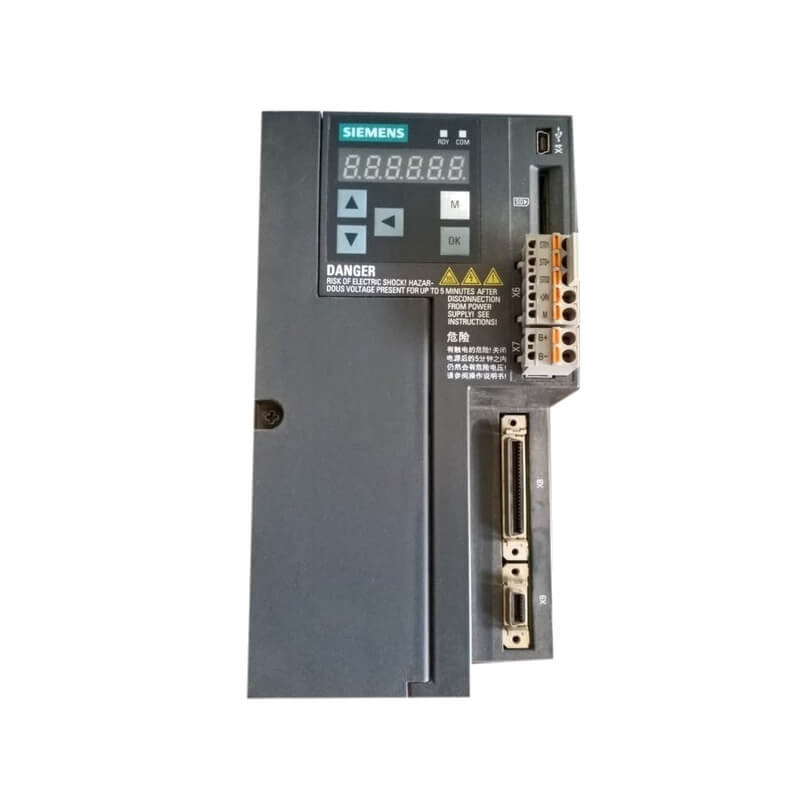
The Delta AS324MT-A Multi-function 24-point Transistor Output Module stands as a robust and versatile solution for industrial automation, offering enhanced control and efficiency in demanding environments. This module distinguishes itself through its high density of transistor outputs, advanced diagnostic capabilities, and seamless integration with Delta's automation ecosystem. Its core advantages lie in its reliability, flexibility, and cost-effectiveness, making it a preferred choice for various manufacturing and process control applications.
Product Specifications
| Feature | Specification |
| :--------------------------- | :---------------------------------------------- |
| Module Type | Multi-function Transistor Output Module |
| Model Number | AS324MT-A |
| Number of Outputs | 24 |
| Output Type | Transistor (PNP) |
| Max. Output Current | 0.5A per channel |
| Max. Voltage | 30V DC |
| Isolation | Channel-to-channel, Module-to-backplane |
| Response Time | < 10 µs (typical) |
| Operating Temperature | 0°C to 55°C (32°F to 131°F) |
| Storage Temperature | -20°C to 70°C (-4°F to 158°F) |
| Dimensions (W x H x D) | 43mm x 100mm x 75mm (approx.) |
| Weight | 120g (approx.) |
| Certifications | CE, UL (pending/specific variants) |
Core Features & Market Positioning
The Delta AS324MT-A excels in delivering precise and rapid control over actuators, solenoids, and indicators. Its 24 transistor outputs provide significant I/O density within a compact footprint, optimizing panel space and reducing overall system cost. The module's PNP transistor output configuration is widely compatible with common industrial devices, simplifying component selection and wiring. Furthermore, its inherent high-speed switching capability is critical for applications requiring dynamic control, such as high-cycle automation or precise motion control synchronization. Positioned as a high-value, performance-driven component within Delta's DVP series, the AS324MT-A offers a compelling alternative to traditional relay outputs or lower-density modules, especially where speed, accuracy, and reliability are paramount.
Key Application Scenarios
This multi-function transistor output module is ideally suited for a broad spectrum of industrial automation tasks. In packaging machinery, it precisely controls pneumatic valves for high-speed sorting and filling operations. For textile manufacturing, the AS324MT-A enables fine-tuned control of numerous motors and actuators involved in complex weaving and stitching processes. In the electronics assembly industry, its rapid response time is crucial for robotic end-effector control and precise pick-and-place operations. Furthermore, it finds extensive use in material handling systems, managing conveyor belts, diverters, and robotic arms for efficient logistics and warehouse automation. The module's versatility also extends to machine tool control, where it manages spindle motors, coolant systems, and tool changers, ensuring operational efficiency and accuracy.
Practical System Integration Guidance
Integrating the Delta AS324MT-A into an automation system involves straightforward wiring and configuration. Each of the 24 transistor outputs can be directly connected to low-power devices like indicator lamps, small relays, or solenoid valves. The common terminal for the outputs should be connected to the positive power supply (V+) for PNP configuration. It is essential to observe the maximum current rating of 0.5A per channel to prevent module damage. When connecting to PLCs, the AS324MT-A typically interfaces with Delta's DVP series controllers via a high-speed bus. Programming involves assigning specific output bits within the PLC's logic to control each of the 24 channels, allowing for precise sequencing and operation management. For commissioning, a systematic output test is recommended to verify correct wiring and logical function before full system activation.
Operation and Risk Mitigation
Safe operation of the Delta AS324MT-A requires adherence to its specified voltage and current limits. Exceeding the 0.5A per channel or 30V DC maximum can lead to premature failure or damage to connected devices. Proper grounding and wiring practices are critical to prevent electrical noise and ensure signal integrity. In environments with high electromagnetic interference, shielded cables should be used for signal lines. Troubleshooting typically involves checking power supply stability, verifying output wiring for shorts or open circuits, and confirming the PLC program logic. While the module offers robust protection, reverse voltage or over-current conditions can cause damage. Always consult the product manual for specific error codes or diagnostic indicators, though the AS324MT-A primarily relies on external PLC logic for fault detection.
Scalability & Long-Term Value
The Delta AS324MT-A offers excellent scalability, particularly when integrated within the broader Delta DVP automation platform. Its modular design allows for easy expansion by adding more I/O modules to a central PLC, accommodating growing production needs without requiring a complete system overhaul. Compatibility with existing Delta DVP controllers ensures a seamless upgrade path and protects investment in the platform. For organizations embracing Industry 4.0 principles, the AS324MT-A can be a foundational element for IIoT integration. By leveraging the PLC's communication capabilities, data from the module's operations—such as output status and operational cycles—can be collected, analyzed, and used for predictive maintenance, process optimization, and enhanced operational visibility, thereby maximizing long-term value and efficiency.
Frequently Asked Questions (FAQs)
1. What type of loads can the Delta AS324MT-A control?
The AS324MT-A is designed for low-power DC loads. It excels at driving devices such as small relays, indicator lamps, and solenoid coils. Each of its 24 transistor outputs can handle up to 0.5A.
It is important to ensure the connected device's current draw stays within this 0.5A limit per channel. Exceeding this rating can lead to output failure or damage to the module.
When selecting loads, consider the voltage requirement, ensuring it does not exceed the module's 30V DC maximum output voltage.
2. How does the PNP output configuration of the AS324MT-A differ from NPN?
In a PNP configuration, the positive terminal of the power supply is connected to the common terminal of the output module. The transistor then switches the load to ground or the negative rail.
Conversely, an NPN configuration connects the negative terminal of the power supply to the common, and the transistor switches the load to the positive rail. The AS324MT-A uses PNP, which is often preferred for connecting to positive-switched inputs on other devices.
Understanding this distinction is crucial for correct wiring and ensuring compatibility with other components in your automation system.
3. What are the advantages of using transistor outputs over relay outputs?
Transistor outputs offer significantly faster switching speeds compared to mechanical relays. This makes them ideal for high-speed applications and pulse width modulation control.
They also boast a much longer operational lifespan due to the absence of moving parts, leading to reduced maintenance and increased system reliability. Transistor outputs generate less electrical noise and consume less power.
However, transistor outputs have a lower current handling capacity and are not suitable for AC loads or high-power DC devices that require relay switching.
4. Can the Delta AS324MT-A be used with PLCs from other manufacturers?
While the AS324MT-A is optimized for Delta's DVP series PLCs, it can potentially be integrated with other PLC brands. This typically requires careful consideration of the communication interface and voltage/current signaling.
You would need to verify if the target PLC's input specifications match the AS324MT-A's output characteristics (e.g., sink/source compatibility, voltage levels). Direct communication via a proprietary bus might not be supported.
External interface modules or specific wiring adaptations may be necessary for successful integration with non-Delta PLCs, often requiring expert knowledge.
5. What is the typical response time for the AS324MT-A, and why is it important?
The Delta AS324MT-A typically offers a response time of less than 10 microseconds. This rapid switching capability is crucial for applications demanding high precision and speed.
Fast response times are essential in processes like high-speed packaging, synchronized motion control, or rapid sorting operations. It ensures that control signals are acted upon almost instantaneously.
This speed minimizes latency in the control loop, leading to improved accuracy, increased throughput, and the ability to execute complex, time-sensitive automation tasks effectively.
6. How is the AS324MT-A physically installed in an industrial control panel?
The AS324MT-A module is designed for DIN rail mounting. It typically slides onto a standard 35mm DIN rail within the control panel.
Ensure the DIN rail is securely mounted and properly grounded. The module usually has clips on the back that engage with the rail, providing a stable mechanical connection.
Allow adequate space around the module for ventilation, as recommended in the product manual, to prevent overheating during operation.
7. What are the environmental operating conditions for the AS324MT-A?
The module is rated for operation within a temperature range of 0°C to 55°C (32°F to 131°F). It should also be protected from excessive humidity and direct sunlight.
For storage, the recommended temperature range is -20°C to 70°C (-4°F to 158°F). Exposure to extreme temperatures outside these ranges can degrade performance or cause permanent damage.
Consult the specific product datasheet for detailed environmental specifications, including vibration and shock resistance ratings, relevant to your installation site.
8. Does the AS324MT-A offer any built-in diagnostic features?
The AS324MT-A's primary diagnostics are typically managed through the connected PLC. The PLC monitors the status of each output channel.
However, the module itself might have indicator LEDs for power and status. Diagnostic information concerning faults or operational issues is usually reported back to the PLC via the communication bus.
Refer to the Delta PLC programming software and the module's manual for specific diagnostic codes or status indicators that can be accessed.
9. What safety precautions should be taken when wiring the AS324MT-A?
Always ensure the main power supply to the control panel and the module's power source are switched off before commencing any wiring. Verify correct polarity when connecting power and output lines.
Use appropriate gauge wiring that can safely handle the expected current. Ensure all connections are tight and secure to prevent intermittent contact or shorts.
Double-check the wiring against the module's pinout diagram and the system's electrical schematics to avoid incorrect connections, which could damage the module or connected devices.
10. How can the AS324MT-A contribute to IIoT integration and Industry 4.0 initiatives?
The AS324MT-A's output status can be monitored by a Delta PLC and transmitted over industrial networks. This allows for real-time data collection on machine states and operational cycles.
This data can feed into SCADA systems or cloud platforms for analysis, enabling predictive maintenance, OEE (Overall Equipment Effectiveness) calculation, and process optimization.
By providing granular control and enabling data collection, this module serves as a fundamental building block for creating smarter, more connected, and data-driven industrial operations.














